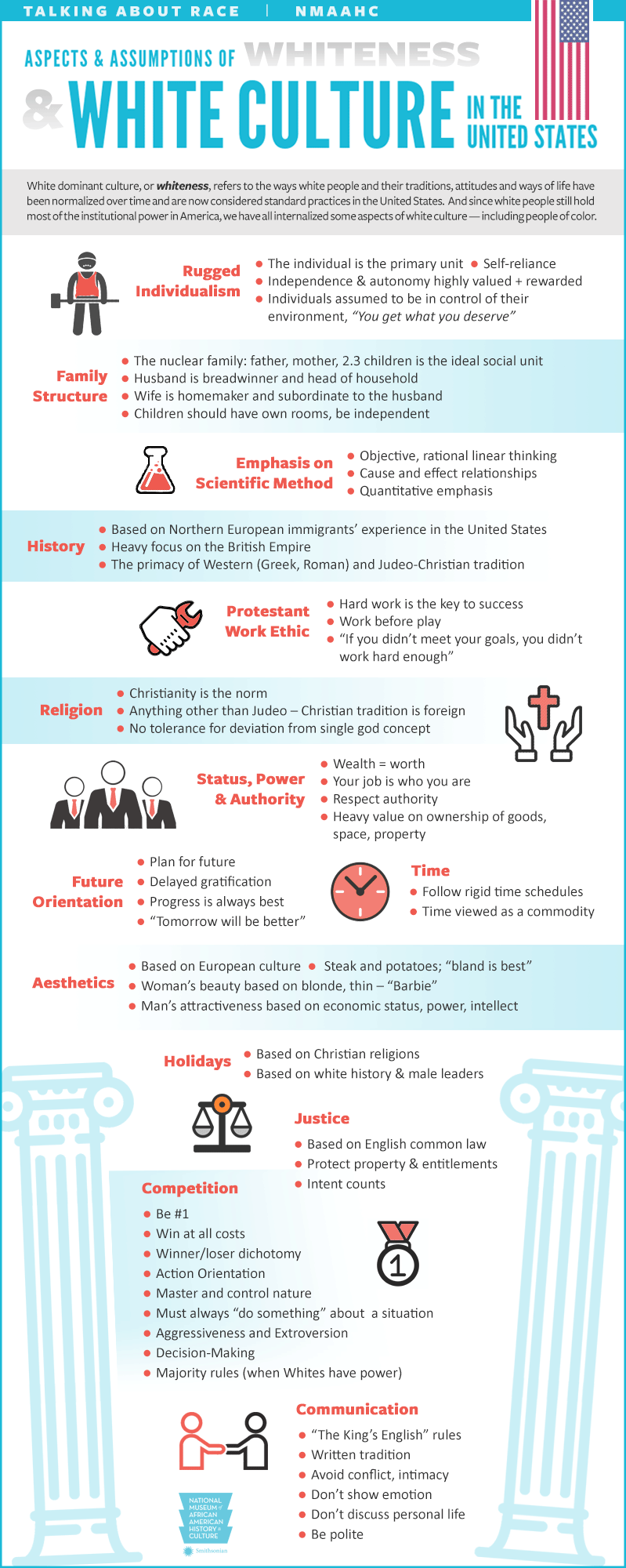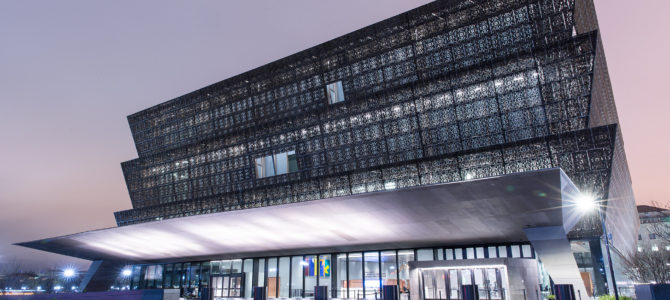The National Museum of African American History & Culture (NMAAHC) is promoting material about “whiteness” and “white culture” on its website in an effort to “discuss race, equity, and inclusion.”
“Issues of race are sometimes blatant and obvious, sometimes subtle and nuanced, and often difficult to confront. However, with commitment and caring, we can all play an important role in dismantling racism to create a more inclusive, just, and safe society. By committing to understanding and talking about race, all our lives will be better,” the NMAAHC wrote.
Using various graphics, videos, and quotes from so-called race experts such as Toni Morrison, Robin DiAngelo, Bell Hooks, Michael Welp, and others, the website lays out why and how white people should address their own race.
“Since white people in America hold most of the political, institutional, and economic power, they receive advantages that nonwhite groups do not,” it reads.
The page, which is labeled “Talking about Race”, outlines its definitions for “white privilege”, “white racial identity,” “white supremacy,” and “white nationalism” while promoting a variety of resources on how to address “white fragility.”
“Whiteness and white racialized identity refer to the way that white people, their customs, culture, and beliefs operate as the standard by which all other groups of are compared,” the website reads. “Whiteness is also at the core of understanding race in America. Whiteness and the normalization of white racial identity throughout America’s history have created a culture where nonwhite persons are seen as inferior or abnormal.”
“Whiteness (and its accepted normality) also exist as everyday microaggressions toward people of color. Acts of microaggressions include verbal, nonverbal, and environmental slights, snubs or insults toward nonwhites. Whether intentional or not, these attitudes communicate hostile, derogatory, or harmful messages,” the page adds.
The resource also frequently refers to a document from 1990 that lists “aspects and assumptions of white culture in the United States” sorted into categories that contain “common characteristics of most U.S. White people most of the time.”
Some of these “common characteristics” include “master and control nature,” “aggressiveness and extroversion,” “heavy value on ownership of goods, space, property,” “steak and potatoes; ‘bland is best’,” “anything other than Judeo – Christian tradition is foreign,” and “no tolerance for deviation from single god concept.”

While the website says that “being white does not mean you haven’t experienced hardships or oppression,” it does say that race does not contribute to “marginalized parts” of the white identity.
The website also claims that “direct and violent forms of racism that promote white supremacy have been on the rise in recent years” and could be the result of the “internalized dominance” mentality and the imposition of “internalized racism” on certain oppressed groups.
At the bottom of the page, the NMAAHC offers a number of conversation points, videos, and reading suggestions for educators, parents, and others to use when addressing “whiteness.”
“Facing your whiteness is hard and can result in feelings of guilt, sadness, confusion, defensiveness, or fear,” the page suggests. “For white people doing anti-racist and social justice work, the first meaningful step should be to recognize their fragility around racial issues and build their emotional stamina.”








